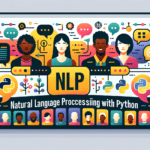Introduction to Dynamic Websites
Ever wondered how your favorite online store remembers your preferences or how news portals tailor the content based on your reading habits? Welcome to the world of dynamic websites, where the content reshapes and evolves based on user interactions. Think of it as attending a party where the music changes based on the mood of the crowd!
Why Choose Dynamic Websites Over Static?
In the dawn of the internet age, websites began their journey as static entities. These early websites can be likened to digital brochures—unwavering, fixed, and providing a one-size-fits-all experience. But, just as our world has evolved, so has the realm of the internet. With technological advances and shifts in user preferences, the demand for dynamic, flexible, and adaptive web experiences grew. Here’s an in-depth look into why dynamic websites have become the preferred choice over their static counterparts:
Advantages of Dynamic Content
-
Fresh and Up-to-date information:
Static websites, once created, often remain untouched for extended periods. This leads to outdated content, which can be a turn-off for visitors seeking the latest information. In contrast, dynamic websites can be easily updated to provide fresh content. Whether it’s the latest news, product updates, or blog posts, dynamic sites ensure visitors always get the most recent data.
-
Tailored User Experiences:
The beauty of dynamic websites lies in their ability to cater to individual user preferences. Based on browsing history, past interactions, and even location, dynamic sites can present personalized content. This level of personalization can drastically improve user engagement and satisfaction.
-
Greater Interactivity:
Dynamic sites often incorporate interactive elements like forms, forums, live chats, and polls. Such features not only enhance user engagement but also provide businesses with invaluable feedback and data. A static website, on the other hand, lacks this depth of engagement.
Evolution of User Experience
Imagine walking into your favorite local coffee shop. The barista, recognizing you, prepares your preferred drink even before you place the order. It’s this familiarity, this personal touch, that makes the experience memorable. Now, transpose this feeling to the online world. Dynamic websites aim to replicate this level of personal attention and comfort.
-
Memory and Recognition:
Much like the barista remembering your regular order, dynamic websites “remember” user preferences. Return visitors might find themselves greeted with familiar layouts, highlighted favorite products, or even a simple “Welcome back!” message.
-
Adaptability:
Just as you might want to change your regular coffee order on some days, users’ online preferences can change. Dynamic sites can adapt and reshape based on evolving user behaviors, ensuring that the user experience is never static or monotonous.
-
Building Relationships:
The personalized experience that dynamic sites offer fosters a sense of loyalty and trust. When users feel recognized and valued, they’re more likely to return, converting occasional visitors into loyal customers or readers.
Popular of Dynamic Website Examples
1. E-commerce Sites:
-
Amazon and eBay:
These giants of online retail have mastered the art of dynamic content. When you browse Amazon, not only do the products you view influence future suggestions, but the system also considers items in your cart, your past purchases, and even products you’ve reviewed. Similarly, eBay tailors its auction recommendations based on both your buying and viewing histories.
-
Zalando:
A rising star in the fashion e-commerce scene, Zalando uses dynamic algorithms to show trending fashion pieces, colors suited to your preference, and styles based on your browsing history.
2. Blogs and News Portals:
-
Medium:
An influential blogging platform, Medium curates articles for readers based on their reading history, claps, and follows. If you’ve shown interest in technology articles, for instance, Medium will prioritize such content in your feed.
-
CNN:
As one of the foremost news portals, CNN adapts its homepage and news feed based on the reader’s location and browsing history, ensuring relevance in the ever-changing world of news.
3. Social Media Platforms:
-
Facebook and Instagram:
Your feed on these platforms is a dynamic masterpiece. Relying on complex algorithms, posts are prioritized based on your likes, comments, shares, and even the amount of time you spend viewing a particular post or story.
-
Twitter:
While it offers a chronological feed, Twitter also showcases a “What you missed” section, curating tweets from accounts you interact with most or content that’s trending in your network.
4. Educational Platforms:
-
Coursera and Udemy:
Both platforms recommend courses not just based on what you’ve taken, but also on current market trends, ensuring learners always have access to relevant knowledge. Moreover, they might suggest complementary courses or paths to deepen your expertise in a chosen domain.
-
Khan Academy:
Tailoring its content to the learner’s pace, Khan Academy adjusts its lessons and exercises based on your performance, ensuring a personalized learning curve.
5. Streaming Services:
-
Netflix:
Beyond just entertainment, Netflix’s recommendation engine is a prime example of dynamic content. The shows and movies you’re recommended aren’t just based on what you’ve watched, but also on your ratings, the time of day you watch, and even your viewing habits (like binge-watching).
-
Spotify:
This music streaming platform evolves its “Discover Weekly” and “Daily Mix” playlists based on songs you’ve liked, shared, or added to your personal playlists.
6. Travel and Accommodation Websites:
-
Airbnb:
When you search for accommodations, Airbnb doesn’t just list available places. It considers your past stays, reviews, and even places you’ve marked as ‘favorites’ to suggest locations. Moreover, it dynamically adjusts its suggestions based on seasonal trends or events.
-
Expedia:
This travel booking site showcases hotel, flight, and activity suggestions based on your past bookings, searches, and even the time left to your planned travel date.
Technical Insights: Under the Hood
-
Database integration:
Dynamic sites often pull content from databases, ensuring the latest information is displayed.
-
Server-side scripting:
Languages like PHP or Python fetch and present content in real-time, making dynamic sites truly “alive.”
Factors to Consider When Going Dynamic
-
Audience Engagement:
Dynamic websites foster more engagement. However, it’s crucial to ensure the user experience remains top-notch.
-
Cost implications:
While dynamic sites offer more features, they might be more expensive to set up and maintain.
-
Maintenance and updates:
Keeping a dynamic site updated requires regular attention, ensuring that all features function seamlessly.
The Road Ahead for Dynamic Websites
With advancements in AI and machine learning, dynamic websites are set to become even more intuitive, potentially predicting user needs before they even realize them. The future is indeed dynamic!
Conclusion
Dynamic websites represent the evolution of the digital realm. By offering personalized, engaging, and interactive experiences, they not only meet the current demands of web users but also pave the way for the future of online interactions. As the web continues to evolve, dynamic sites will undoubtedly lead the charge, shaping unique experiences for every digital traveler.



